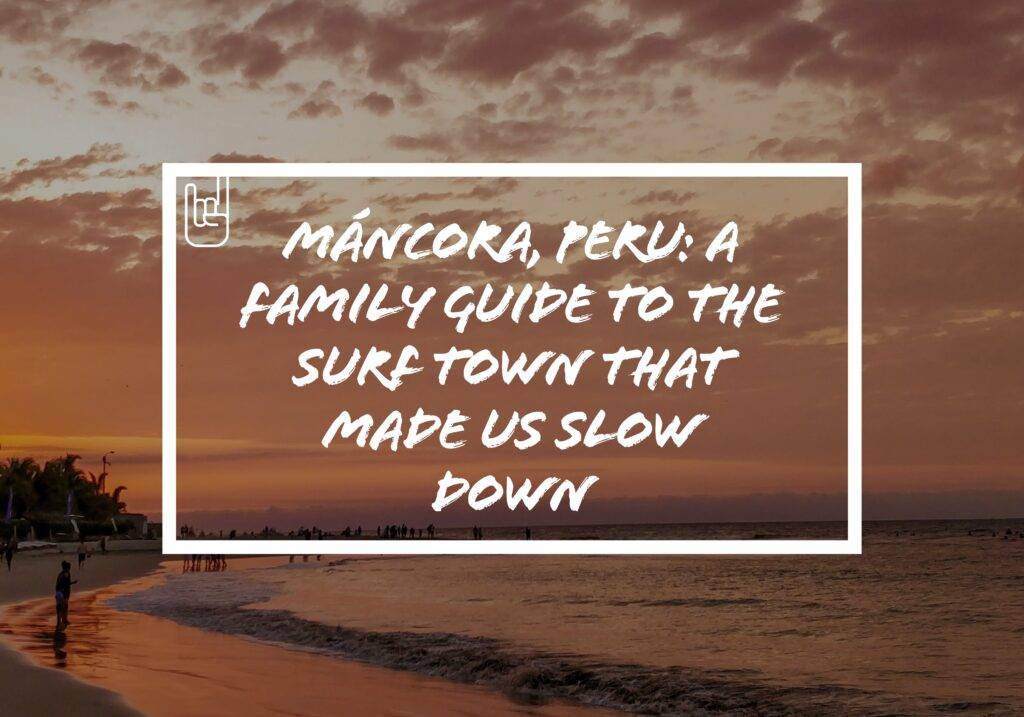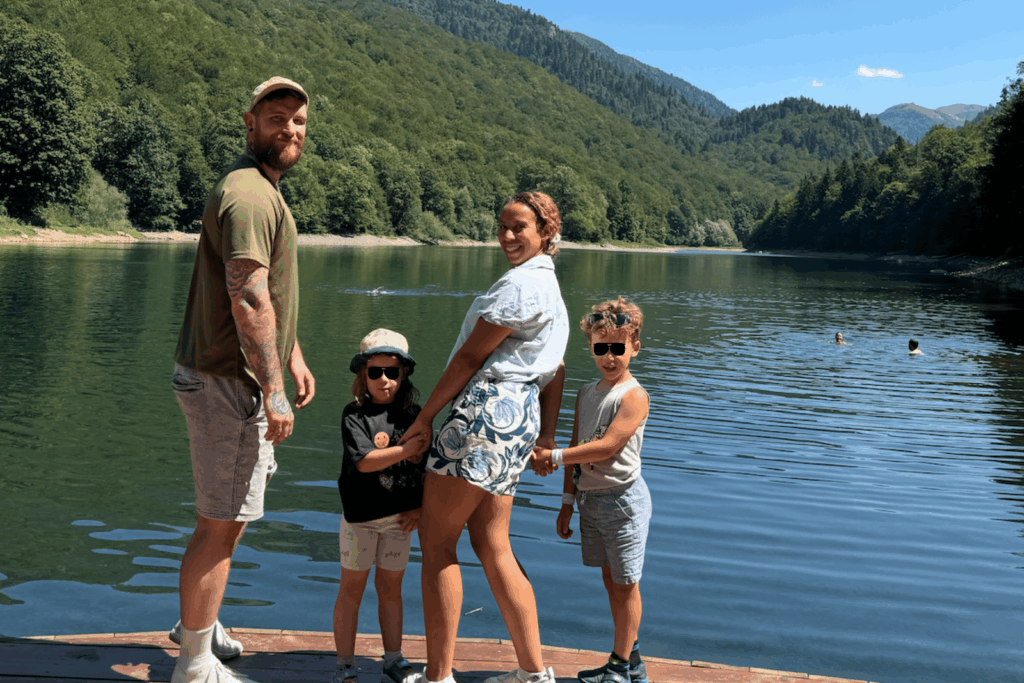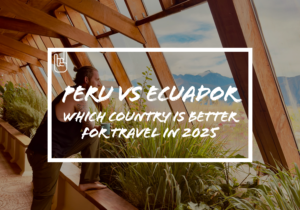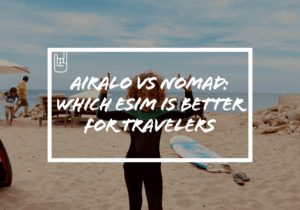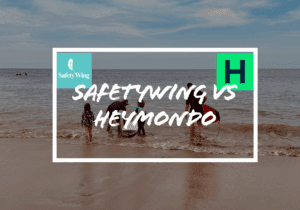Máncora Peru with kids: The Complete Travel Guide
After weeks of mountain air and border crossings, we landed in Máncora 2nd October 2025, a sun-soaked surf town on Peru’s northern coast where time moves slower, the waves roll gentler, and our family finally learned to exhale.
Updated: November 2025
Visited: Mancora, Peru (Oct 2025)
Family travel, long-term route through South America
After weeks of mountain air and cobblestone streets in Cuenca, we packed up our backpacks, said goodbye to Ecuador, and boarded an overnight bus bound for the Peruvian coast.
Eight hours later, bleary-eyed but curious, we rolled into Máncora, a dusty surf town just south of the Ecuador border that promised sunshine, sea air, and a slower rhythm.
We weren’t sure what to expect. Some travellers called it over-hyped, others swore it was paradise. What we found was somewhere in between: a laid-back beach escape that worked perfectly for our family, complete with good coffee, warm surf, and a few surprises along the way.
This guide covers everything from how to cross the Huaquillas border and survive a 4 a.m. arrival with kids, to where to stay, eat, and play without blowing the budget.
The Máncora Family Essentials
Getting In / Easiest overland is the overnight bus (Cuenca → Máncora ~8 hrs; Talara/Piura → Máncora 2–4 hrs). Flying? Look at Talara (TYL), Tumbes (TBP) or Piura (PIU), then a 1–3 hr transfer to town. If you’re landing with sleepy kids, a pre-arranged taxi/transfer is worth it.
Getting Around / In town it’s all mototaxis (cheap + fun). For beach-hopping to Las Pocitas / Los Órganos / El Ñuro, a day rental via Discover Cars keeps it simple.
Where to Stay (quick picks)
– Arennas Máncora – resort vibe, calm stretch of sand, fab pool (great for “do nothing” days).
– Grandmare & Bungalows – roomy bungalows + ocean views; good value for families.
– Máncora Beach House – smaller, friendly, right on the sand.
Surf & Lessons / Gentle waves, soft sand, and a surf culture that’s welcoming to beginners. We booked ours via GetYourGuide, great local partners, easy to organise, and stellar reviews. If you prefer to rent on the spot, boards run about S/25 along the malecón.
Day Trips / South to El Ñuro or Los Órganos for turtle swims + coastal boat trips (easy small-group tours from Piura/Máncora on GYG/Viator). Sunset horse rides on Las Pocitas are a hit too.
When to Go / Dec–Apr = warmest water & light winds. May–Oct brings breeze + smaller crowds; mornings are glassy for beginners.
Money & Connectivity / ATMs: Caja Piura and Banco de la Nación were the least fussy for us. Grab an Airalo eSIM so you can call a mototaxi at 4:30 a.m. without hunting Wi-Fi.
Insurance / For long stays, a lightweight nomad policy we fully preach Safetywing, its our go to travel insurance
Family Tip / Pre-book night-arrival check-in. Even if you move later, having a door to knock at before sunrise is priceless.
Getting from Cuenca to Máncora by Bus
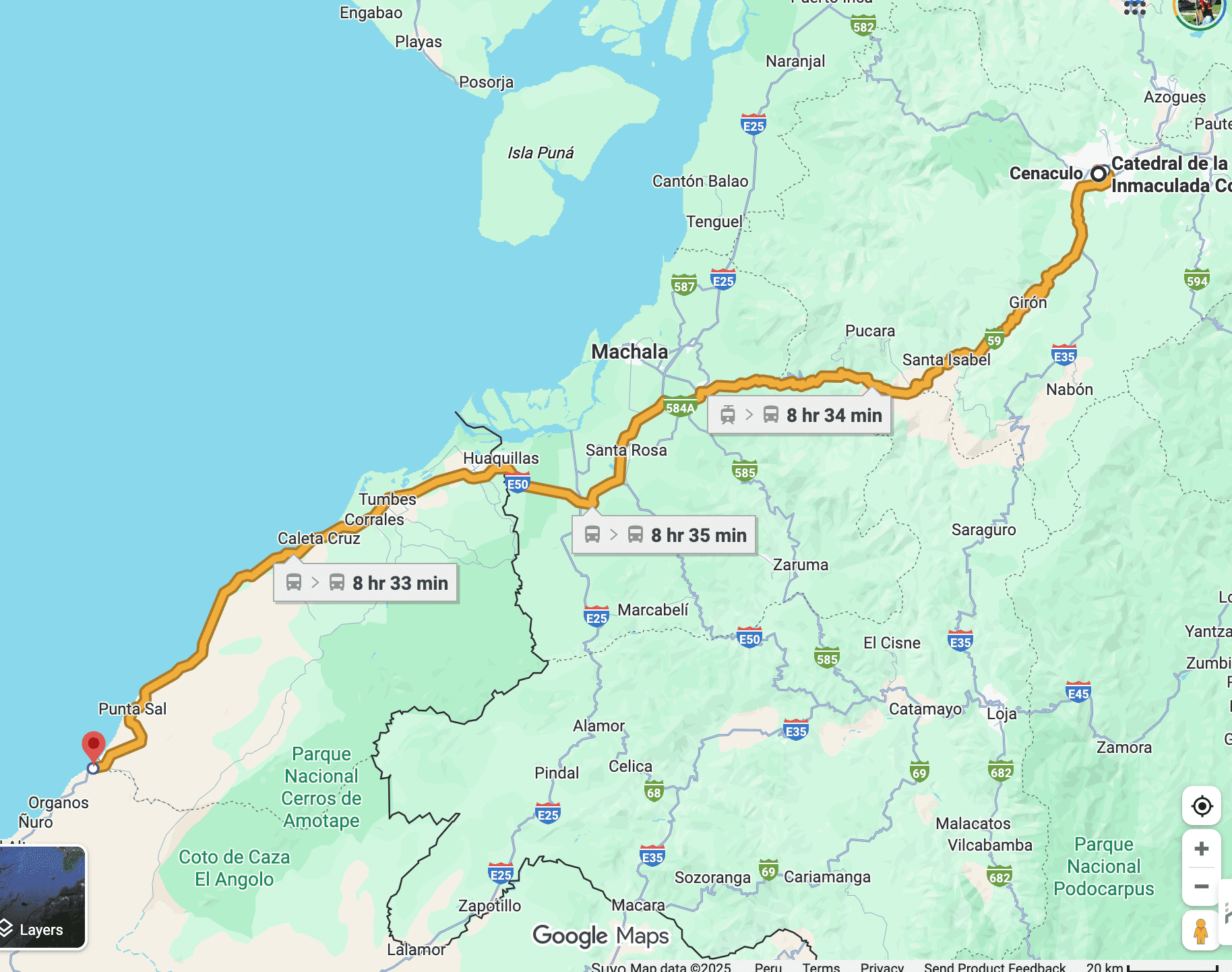
If you’re travelling overland between Ecuador and Peru, the Cuenca to Máncora route is one of the easiest and most affordable ways to cross the border, especially for families trying to balance budget with comfort.
We booked a direct night bus from Cuenca’s Terminal Terrestre. It left around 8 p.m. and arrived in Máncora close to 4:30 a.m., so roughly eight hours door-to-door, border formalities included. Most long-distance buses on this route are surprisingly comfortable; ours came with fully reclining seats, USB chargers, and even a small snack service, juice plus a muffin. Once the seats were flat, it was as close to a decent night’s sleep as you can hope for with two kids on board.
What to Pack and How to Organize Your Bags
A simple system saved our sanity:
One large carry-on for valuables, passports, tech, and cash, kept with us on the bus.
Two smaller backpacks for snacks, layers, and kid gear under the seats.
Everything else stored in the bus hold, clearly tagged and confirmed with a luggage ticket from the attendant.
It sounds obvious, but when you’re juggling tired kids at night or early hours in the a.m., this makes all the difference.
Crossing the Huaquillas Border
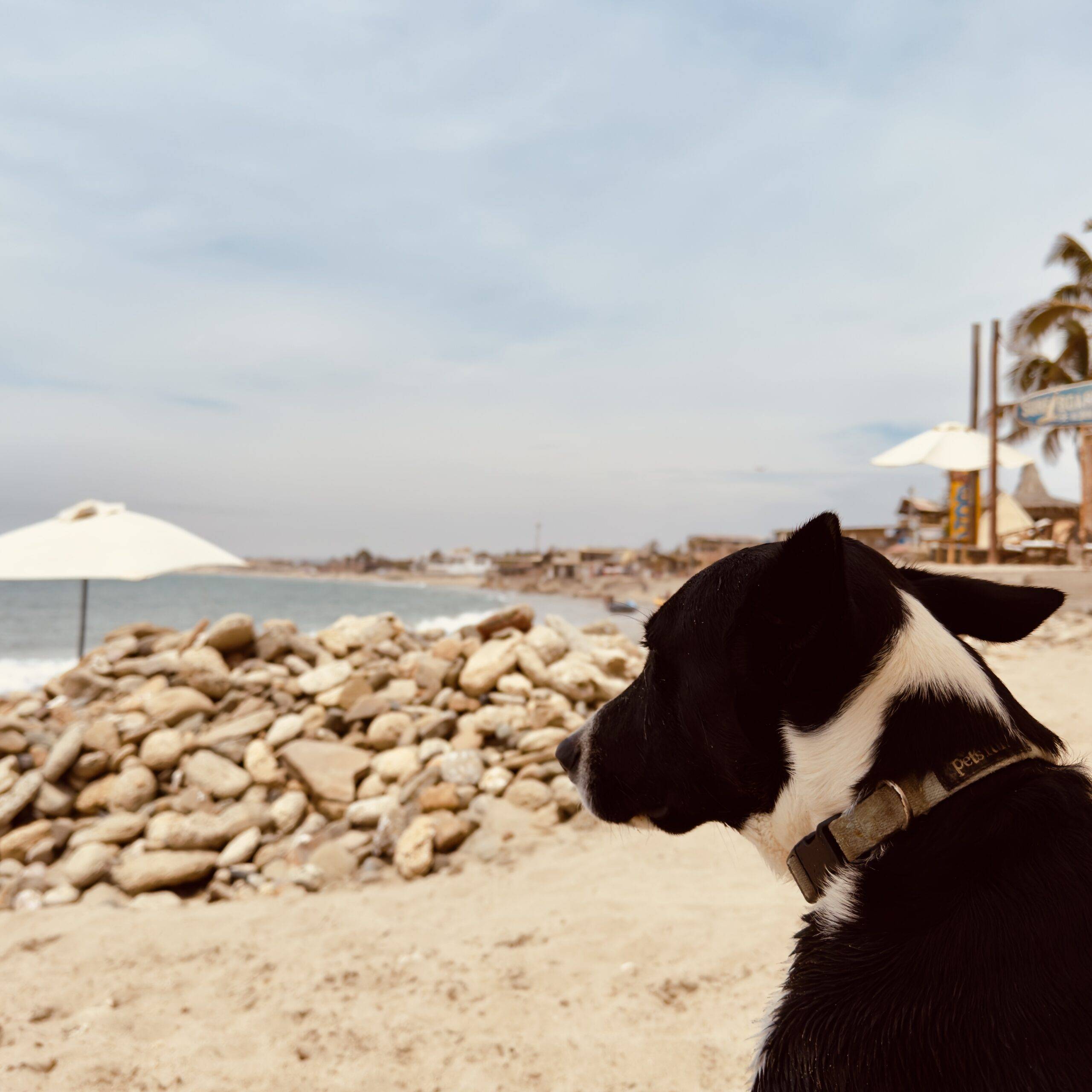
Around 1 a.m., the bus stopped at the Huaquillas, Tumbes border crossing. Everyone had to get off, carrying passports and valuables. Both Ecuador exit and Peru entry happen inside the same small immigration building, efficient but brightly lit and cold at that hour. The process took about an hour for our busload: fingerprints, photos, and two new passport stamps.
A few families had to unpack extra documents, so patience is key. We kept snacks and water handy, and our youngest half-slept through the queue wrapped in a blanket.
After re-boarding, the bus made a couple more short stops for customs checks and local passengers, but you stay seated. By 3 a.m., most people were back asleep as the bus wound down the final stretch toward the coast.
Despite the odd hour, the crossing felt safe and organised, no aggressive touts or confusion, just slow bureaucracy and yawning travellers. For long-term families like us, it was one of the smoother overland borders we’ve done.
Arriving in Máncora (Early-Morning Reality Check)
By the time the bus rolled into Máncora, it was just past 4:30 a.m. Pitch-black outside, the air thick with salt and diesel, and two sleepy kids trying to decide whether to cry or keep dozing.
Like most coastal towns, Máncora doesn’t really wake up until sunrise. So stepping off the bus that early felt… intense. Within seconds, a group of mototaxi drivers surrounded us, all calling out names of hostels and hotels, waving laminated cards and offering “good price.”
It’s one of those travel moments that tests your patience and instincts. We’d just crossed a border in the middle of the night, everyone was tired, and safety comes first.
Our 4:30 a.m. Strategy
We spotted a small open shack café across the street, just a wooden counter and a single lightbulb. The coffee was terrible, but they had Wi-Fi. That Wi-Fi saved us.
Within ten minutes, we found our pre-booked hotel details, messaged the host, and showed the address to one of the waiting drivers. To his credit, he not only drove us there but waited outside until we were safely checked in. He even knocked on the gate and spoke to the night manager for us, a small kindness that meant a lot after a long night.
By 5:30 a.m., we were horizontal again, catching a few hours of sleep before waking up to sunshine, sea breeze, and the sound of surf.
Safety Tips for Early Arrivals
- Pre-book your first night’s stay. Even if you plan to change later, you’ll want a confirmed address for that pre-dawn arrival.
Keep small bills ready (5–10 soles) for the mototaxi; ATMs may not open until morning.
Stick to the main road by the bus station until daylight, Máncora is generally safe, but it’s not the time for wandering side streets.
Ask your accommodation if they can arrange an early check-in or hold bags if you arrive before sunrise.
Once the sun’s up, the town transforms completely. The dusty, half-asleep streets fill with surfers carrying boards, locals setting up breakfast stalls, and kids chasing dogs down to the beach.
After that first rough hour, Máncora immediately started to win us over.
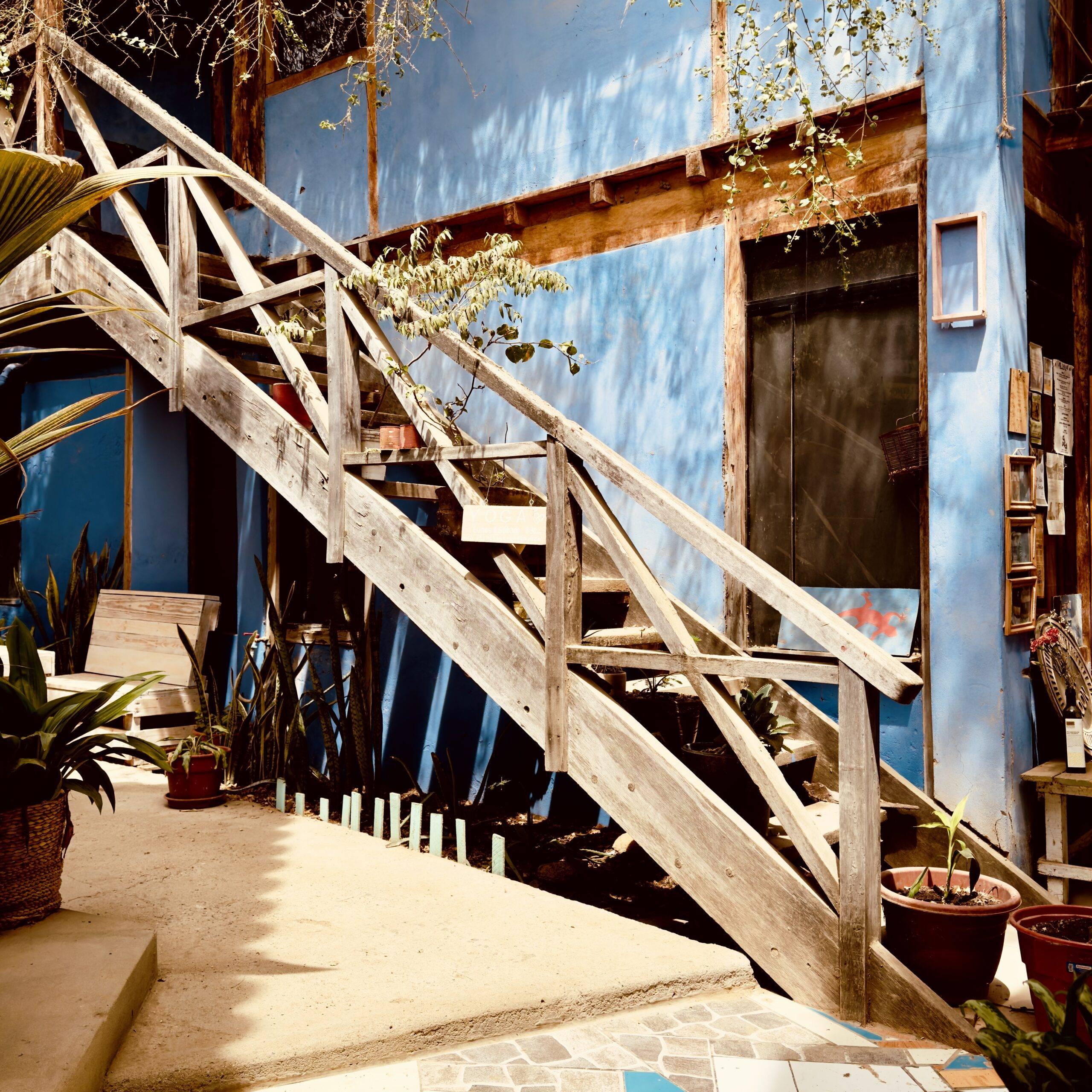
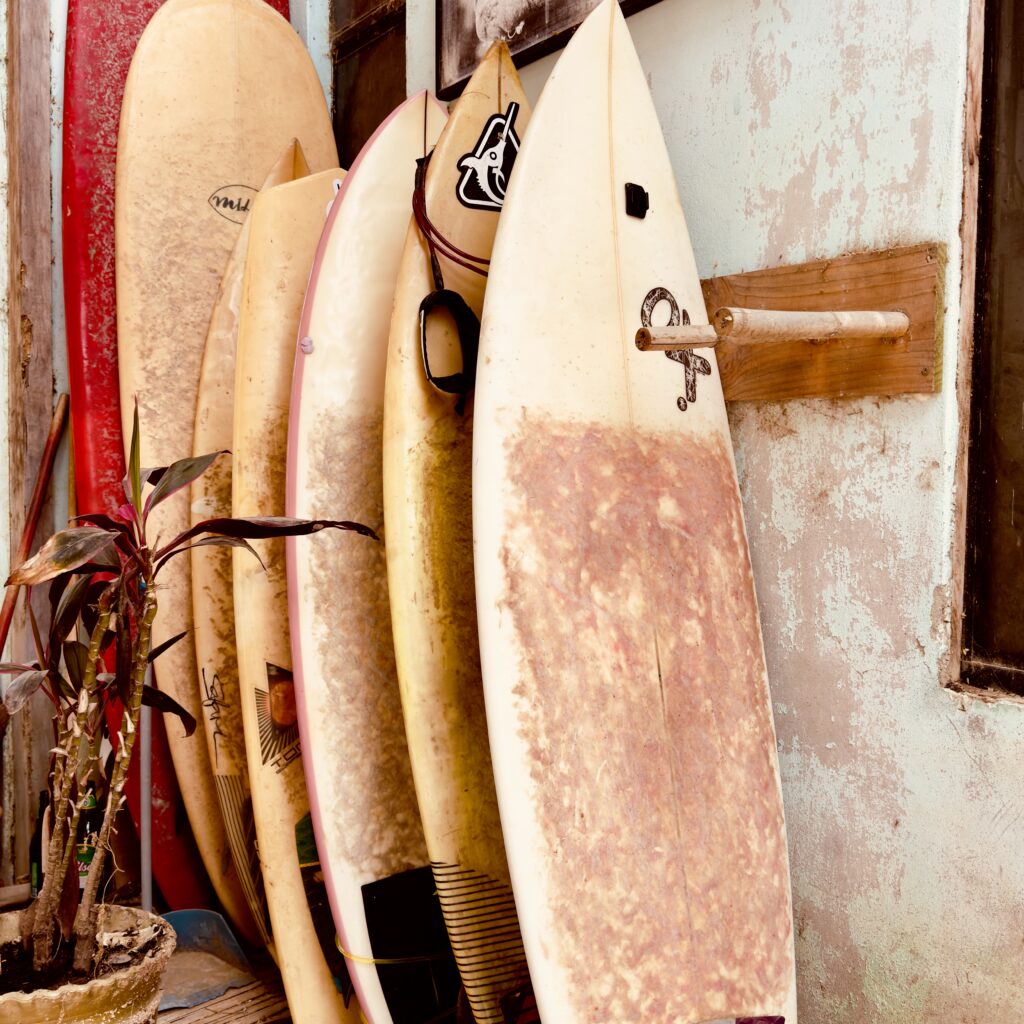
Where We Stayed in Máncora (What Worked and What Didn’t)
After catching up on a few hours of sleep, we spent our first morning in Máncora doing what every traveling family does after an overnight bus: regrouping, rehydrating, and questioning our life choices.
But once the coffee kicked in and the sun came up, it was clear why people rave about this place. Máncora is all about the beach-to-doorstep lifestyle, sandals, sea breeze, and slow days that seem to melt together.
We ended up staying five nights instead of three, splitting our time between two very different places.
1. Loki Máncora – Budget-Friendly but Rough Around the Edges
For the first couple of nights, we stayed at Loki Máncora, one of the town’s best-known beachfront hostels. It’s a popular choice among younger travelers, but we figured a couple of days of beach access and a pool would work fine for our family.
The verdict? Mixed.
It wasn’t quite like the photos, more hostel than hotel, and most guests were Latin American holiday-goers in party mode. The rooms were basic and a bit cramped, though having direct beach access was a big plus for sunrise walks and surf lessons.
If you’re traveling on a tight budget and don’t mind a social vibe, 2-3 nights max, Loki can work for a short stay.
What we paid: around $40 USD per night for a private room.
Bookable via: Booking.com
2. The Airbnb Upgrade – A Hidden Gem
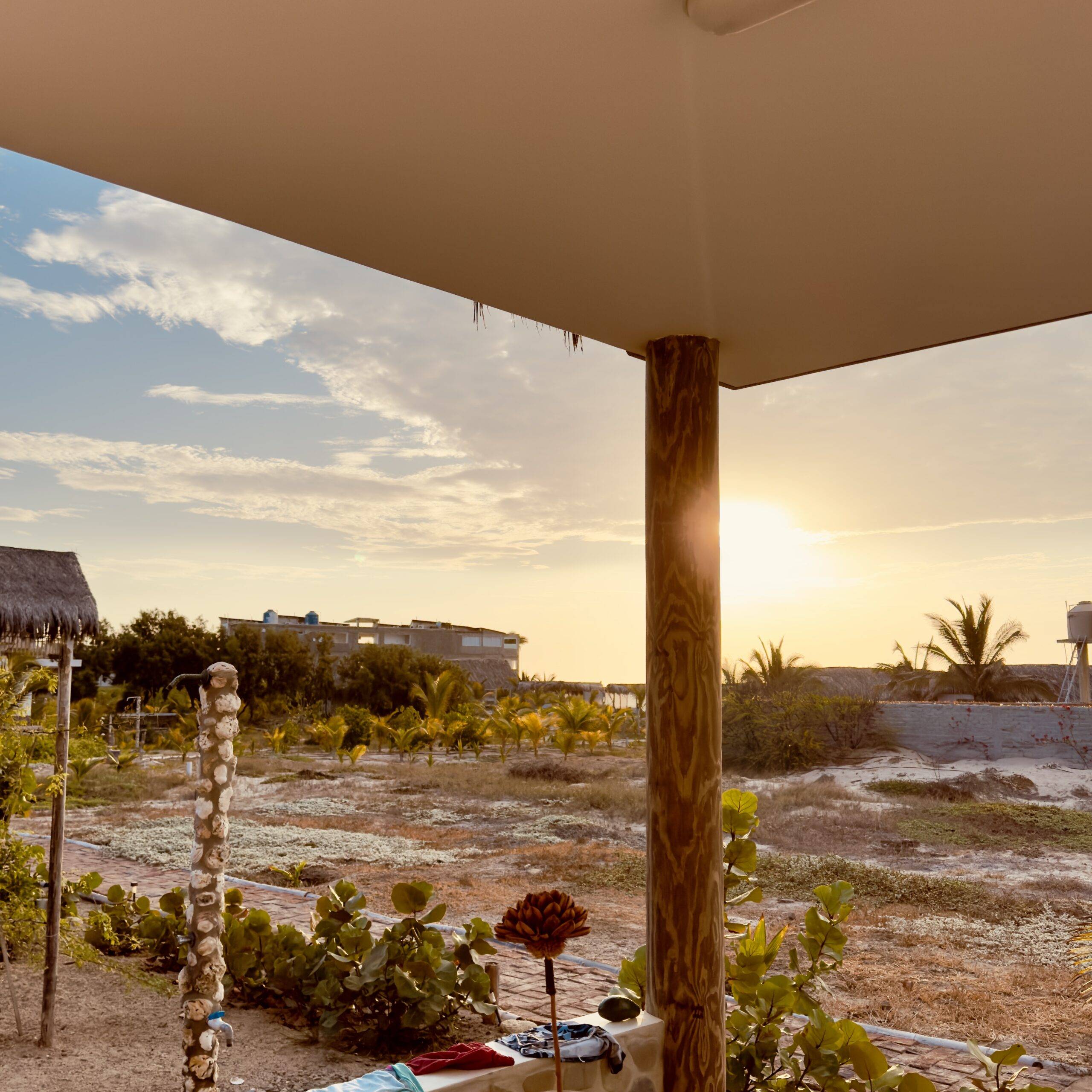
After two nights at Loki, we moved to an Airbnb we found through a host’s profile trick, something worth sharing because it can save families serious money.
When you find a place you like on Airbnb, click on the host’s name. Often, they manage multiple properties. In our case, this host had another, newer beachfront apartment listed for half the price simply because it didn’t yet have reviews.
We took the gamble, and it paid off. The apartment was clean, modern, and right on the sand, just far enough from the main strip to be quiet at night. It instantly changed our Máncora experience.
The difference between the two stays reminded us of something we’ve learned often on this trip: you can travel cheap without feeling cheap, if you look a little deeper.
What we paid: roughly $55 USD per night
We also found it here
Accommodation Takeaways for Families
- Always check host profiles on Airbnb – lesser-known listings are often newer, cleaner, and cheaper.
Stay beachfront if you can – the sea breeze keeps rooms cooler, and you’ll walk less in the heat. But factor is sand mess.
Avoid party hostels unless you’re okay with late-night noise.
Ask about kitchen access. Having one meal “in” each day makes a big difference for long-term budget travel.
After switching to the Airbnb, our days finally slowed down. The kids built sandcastles in front of our door, I finally unpacked the drone, and we found a rhythm of early swims, lazy afternoons, and sunset cafés that made Máncora one of the most unexpectedly restful stops of our trip.
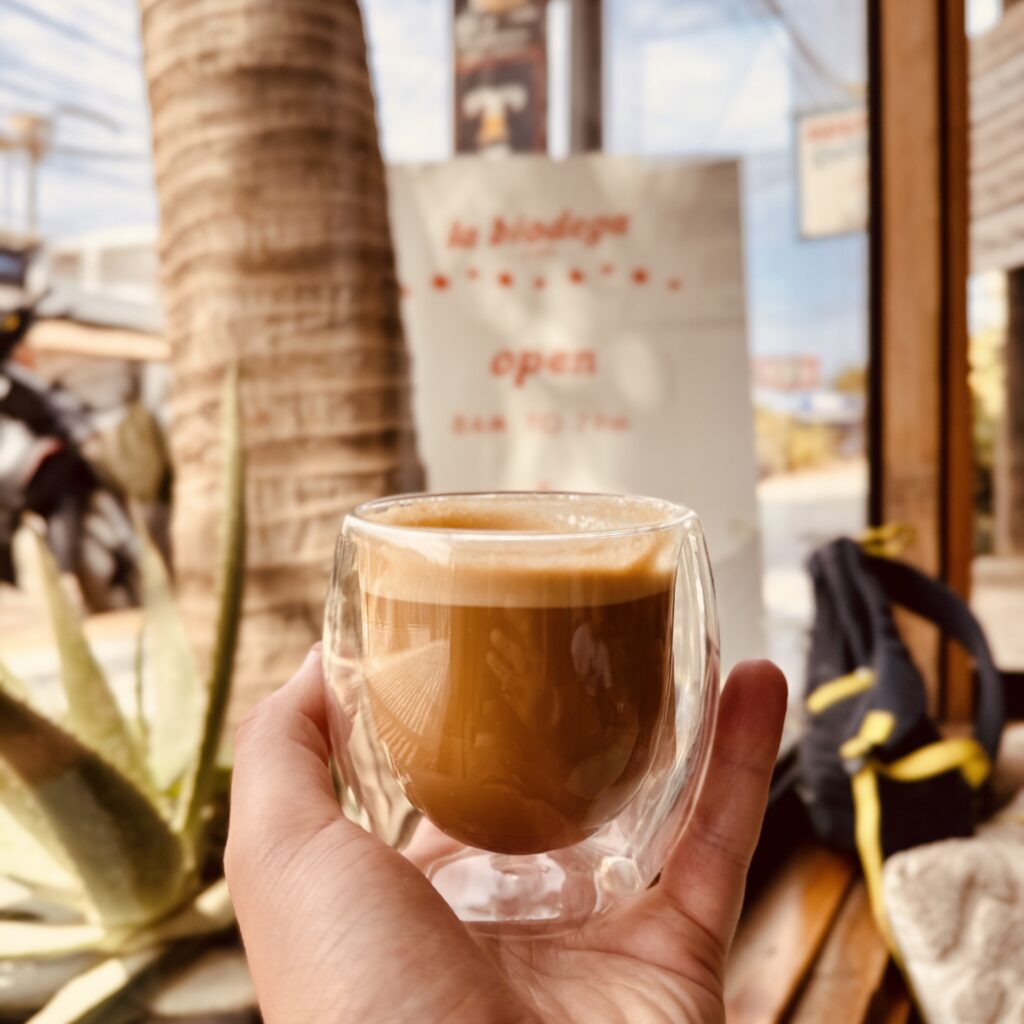
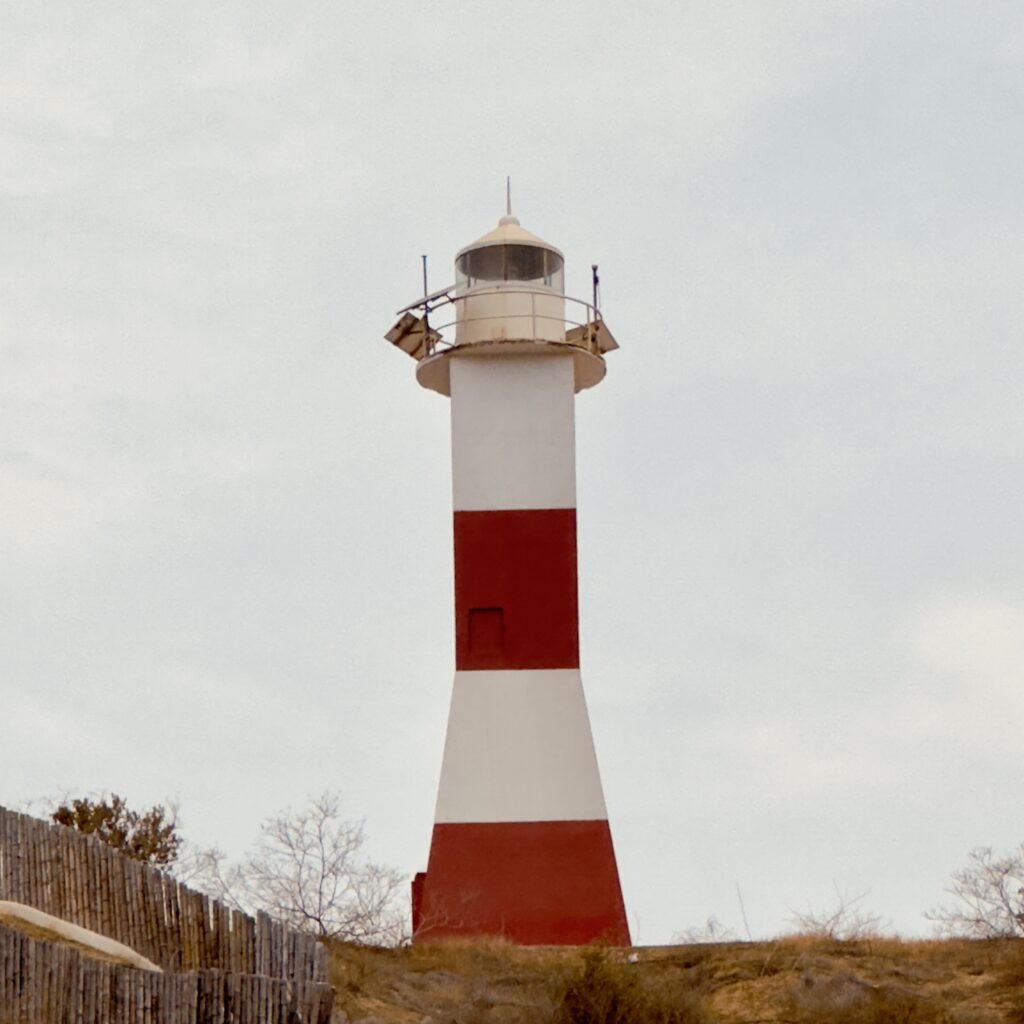
Eating and Drinking in Máncora
If Cuenca and Baños spoiled us with affordable almuerzos and endless bakeries, Máncora reminded us what happens when you land in a beach town: everything costs a little more, and it’s a lot harder to resist eating out.
Still, we managed to keep meals enjoyable and mostly within budget by mixing local cafés, a few restaurant splurges, and the occasional self-catered breakfast at our Airbnb.
What Food Costs in Máncora
For a family of four, restaurant meals averaged 80–120 soles (£18–27), depending on whether we went for ceviche or sandwiches.
Coffees in cafés ran about 12 soles each (£2–3). Not outrageous, but higher than Ecuador.
The real adjustment was mental: converting Peruvian soles after months of dealing in U.S. dollars took us a few days to get used to.
If your accommodation doesn’t have a kitchen, expect to spend more than you’re used to. Simple lunches turn into restaurant meals, and beach snacks add up quickly when everyone wants smoothies and ice cream.
Cafés We Loved
We tried more coffee spots than we probably should have, partly because working online means Wi-Fi and caffeine become part of the daily routine.
These were our favourites:
Café Coral – relaxed and shaded, great for a morning espresso while the kids play in the sand below.
Palmeras Eco Tienda y Café – excellent iced coffees, plus vegan pastries if you need a break from fried food.
Café de Barrio – good breakfast options, friendly staff, decent Wi-Fi.
La Bodega Café – healthy bowls, smoothies, and great for kids who like simple food.
Artisan Bodega Bar – casual evening hang-out with live music some nights.
None of these are the cheapest in town, but all are reliable, clean, and family-friendly.
Restaurants Worth the Splurge
Sometimes you just need a sit-down meal that feels like a treat.
Our two standouts:
Atelier Máncora – creative Peruvian fusion, quiet setting, and some of the best fish we’ve had on the trip.
KIM Sushi Bar – surprisingly authentic rolls, a hit with the kids after weeks of rice and beans.
Most places accept cards, but smaller cafés prefer cash. We used Caja Piura and Banco de la Nación ATMs without extra fees.
If You’re Vegetarian (or Just Trying to Eat Light)
Vegetarian and vegan options are limited. Fruit stalls dominate, but most vegetable sellers stock only the basics, tomatoes, onions, carrots, and a lot of plantains.
Beach towns in northern Peru lean heavily on seafood and meat. If you cook, bring spices or extras from bigger cities like Piura or Cuenca.
Budget Food Tips
- Almuerzos are rarer here but still exist away from the beach; ask locals for the “menu del día.”
Share plates – portions are generous, especially rice and pasta dishes.
Stock up early – fruit markets tend to close by 3 p.m.
Bring snacks for the beach; kiosks charge double once you’re on the sand.
Even with the higher prices, we never felt gouged, it’s just beach-economy math. The coffee alone makes up for it.
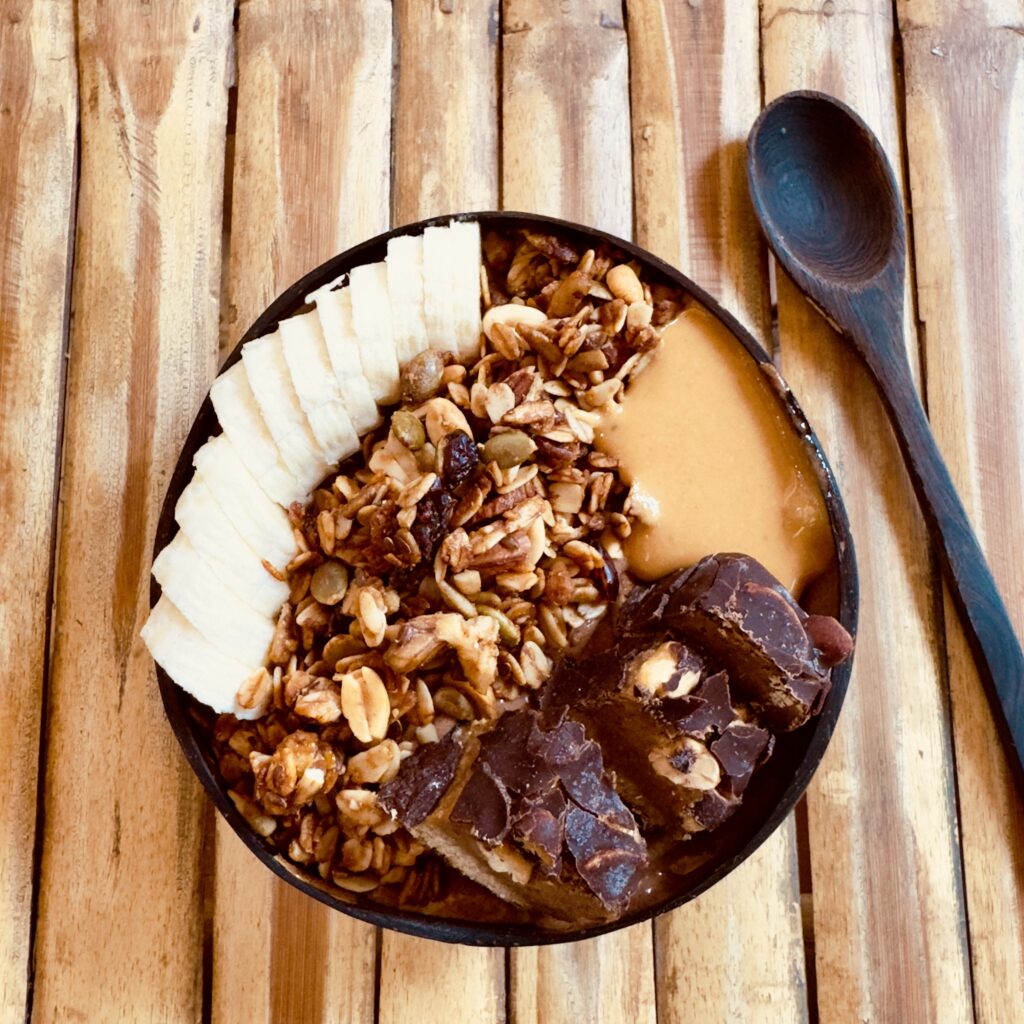
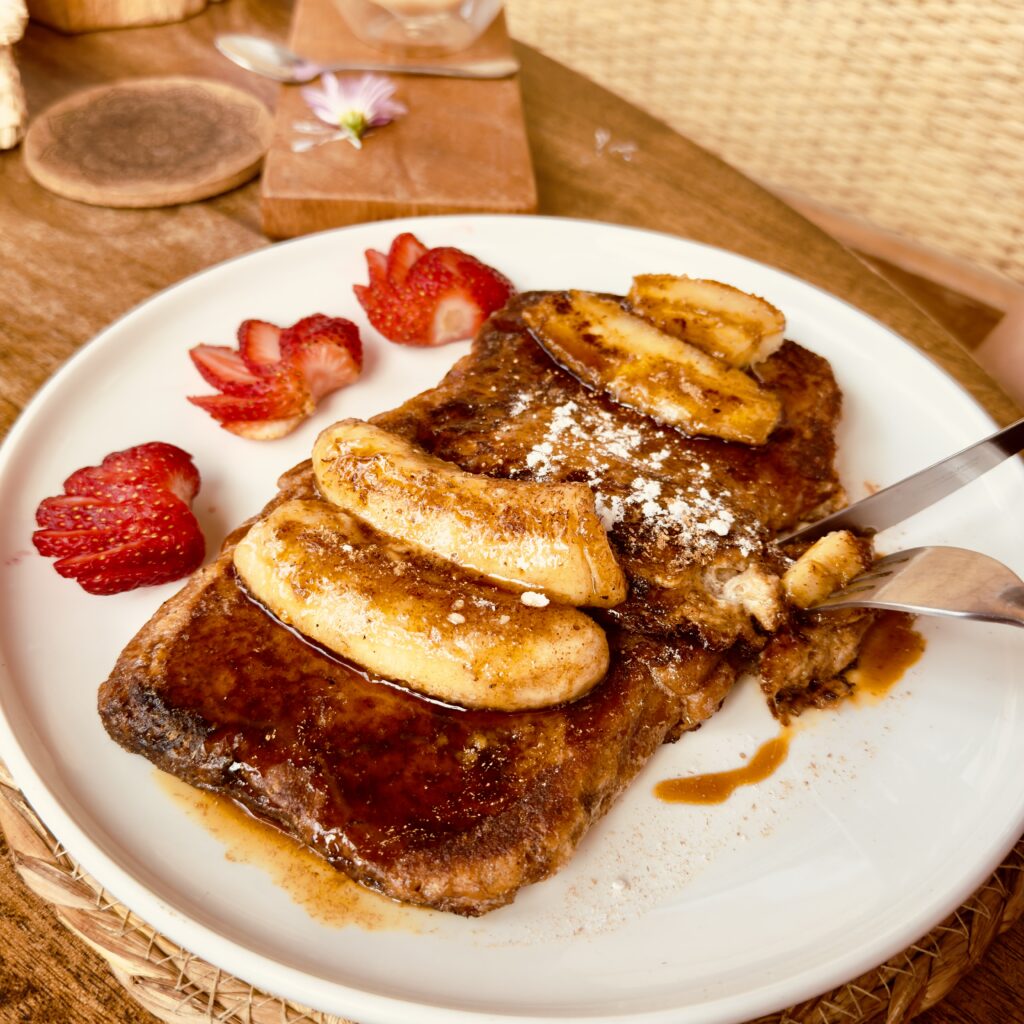
What to Do in Máncora With Kids
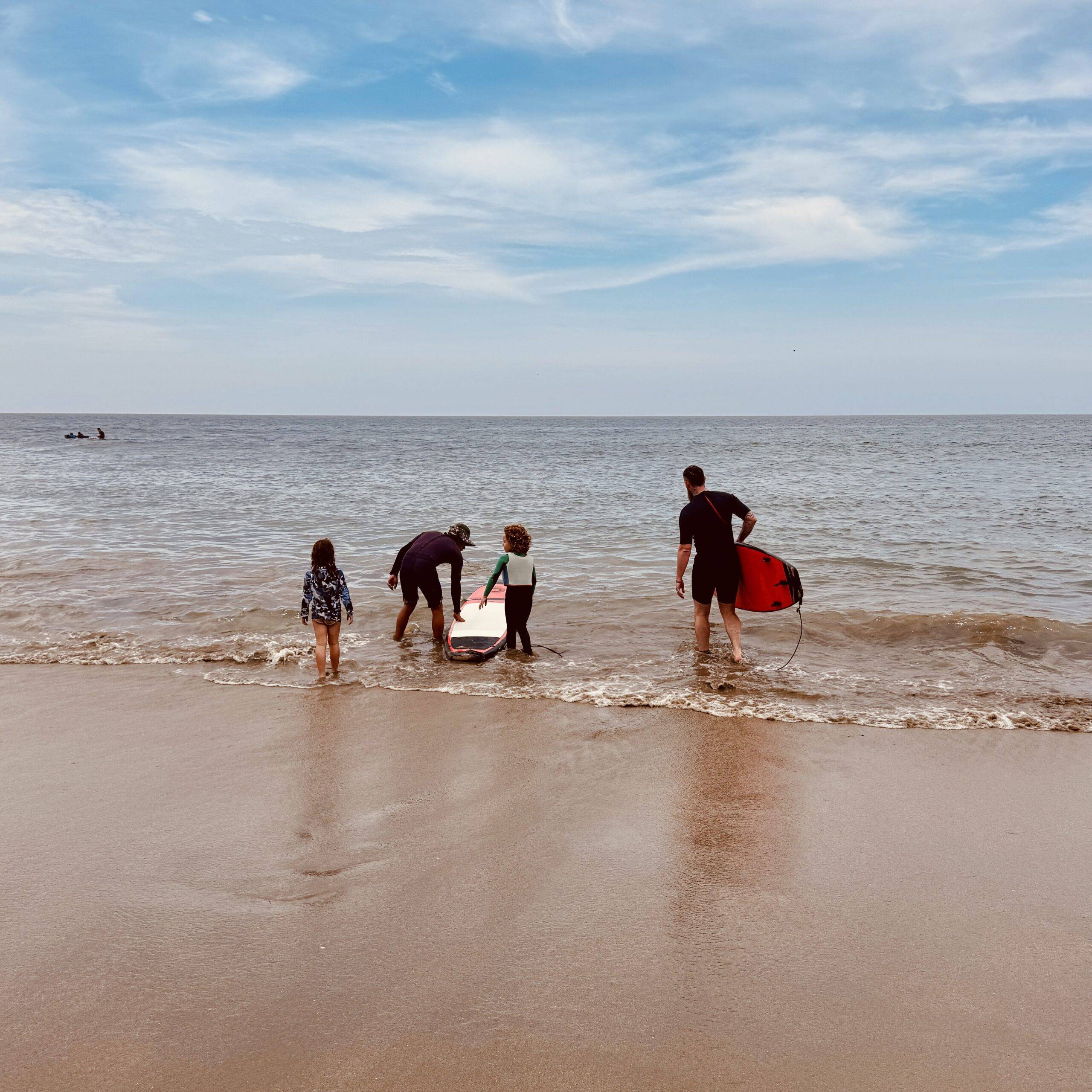
Máncora isn’t packed with big-ticket attractions, and that’s exactly its charm.
After weeks of buses and high-altitude cities, the slower pace was the reset we didn’t know we needed.
Most days revolved around the same simple routine: mornings on the beach, lazy café lunches, and sunsets in the sand. There’s plenty here for families, as long as you trade schedules for spontaneity.
1. Beach Days Done Right
The main beach in Máncora stretches for miles, wide, clean, and shallow enough near the shore for kids to play safely.
It’s busy near the main strip, but if you walk south toward Las Pocitas, you’ll find quieter stretches and small rocky tide pools where the kids can hunt for crabs and shells.
We spent hours here spotting tiny hermit crabs darting into holes before the waves came in, simple entertainment that kept the kids happy and us relaxed.
Bring plenty of sunblock and water; the Peruvian sun is fierce even when it’s cloudy.
2. Surf Lessons for All Ages
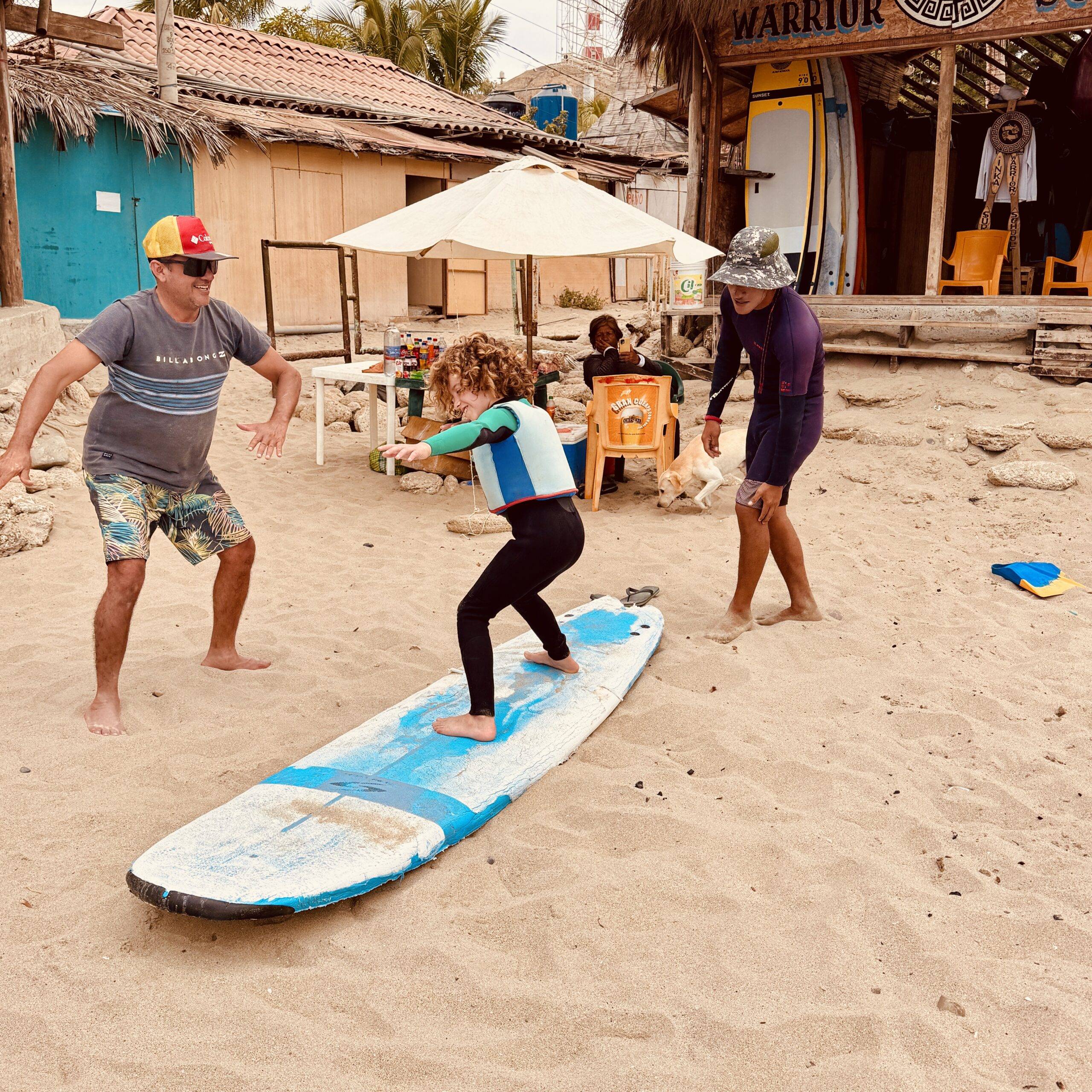
If you’ve ever wanted to try surfing as a family, Máncora is one of the best beginner spots in South America.
Waves are gentle enough for kids and complete novices, and local surf schools are well-run and patient with families.
We booked with Inka Warrior Surf School, and they were fantastic, friendly instructors, flexible lesson times, and a safe ratio of one instructor per two people.
Even our youngest managed to stand up on a few small waves, which made his entire week.
Lessons typically cost around 60–80 soles per person, including board rental and rash guards.
3. Beach Bars and Chill Spots
After surf lessons, we often ended up at Barinsta Máncora, a small beach bar that became our go-to spot for smoothies and sunset drinks.
It’s one of those low-key places where parents can relax while kids play in the sand right in front of you, a win for everyone.
4. Hidden Beach Corners
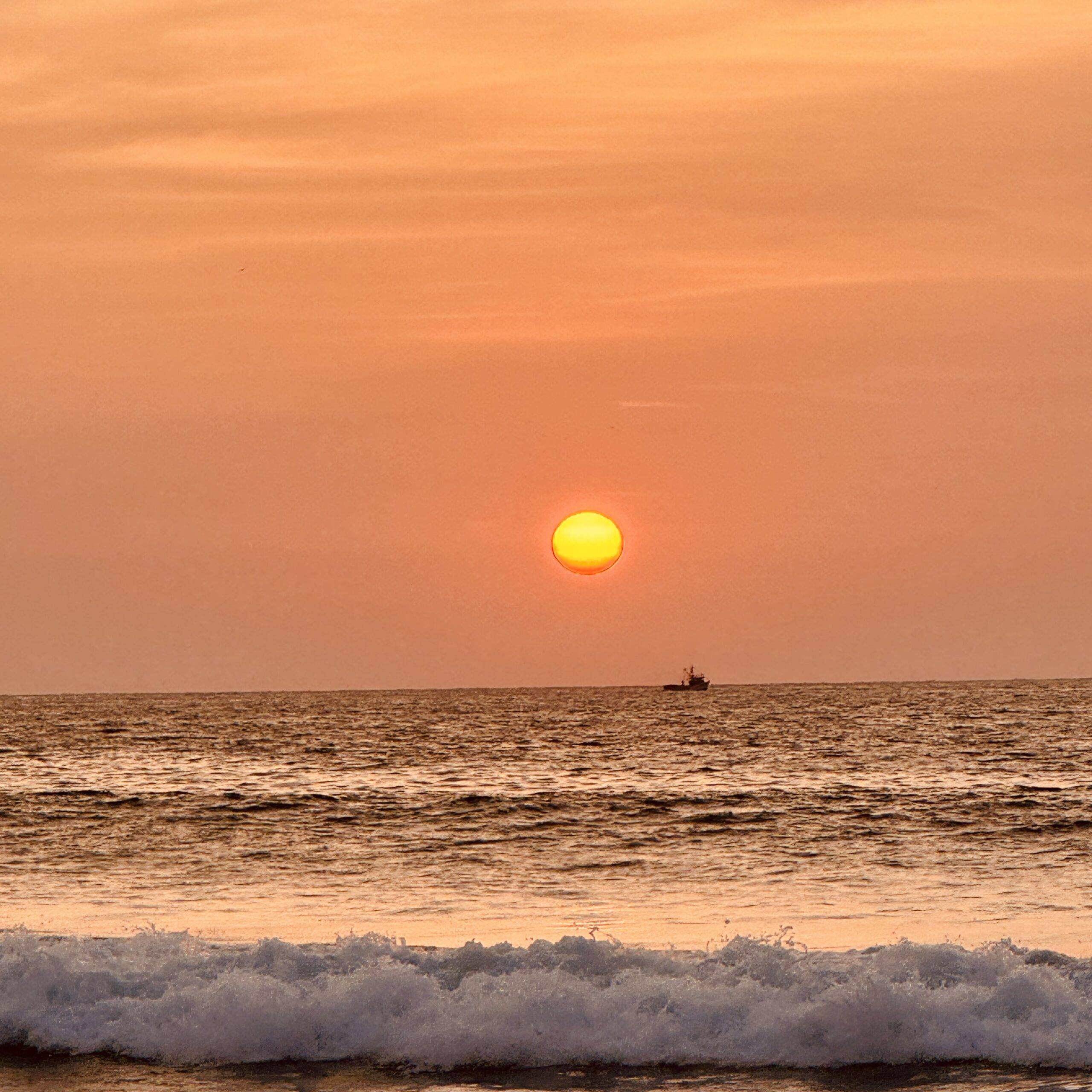
If you want to escape the crowds entirely, head south near El Sunset Café.
There’s a quiet stretch of beach here with natural rock pools, perfect for crab spotting and paddling.
It’s an easy 15–20 minute walk from the main beach or a short mototaxi ride if the kids are tired.
Bring snacks and stay for sunset, it’s one of the best in town, and far less crowded.
5. Simple Moments That Make It Worth It
We didn’t rush through Máncora trying to “tick off” sights.
The real joy was in the small things: early swims before breakfast, sandcastle competitions, and the kids chasing pelicans that strutted too close to the shore.
It wasn’t adventurous in the traditional sense, no zip lines or mountain hikes had plenty of that in Baños but it was exactly what our family needed.
A pause. A bit of stillness between bus rides and border crossings.
And honestly, watching the kids laugh through salty hair and sandy faces might be one of my favorite travel memories from Peru.
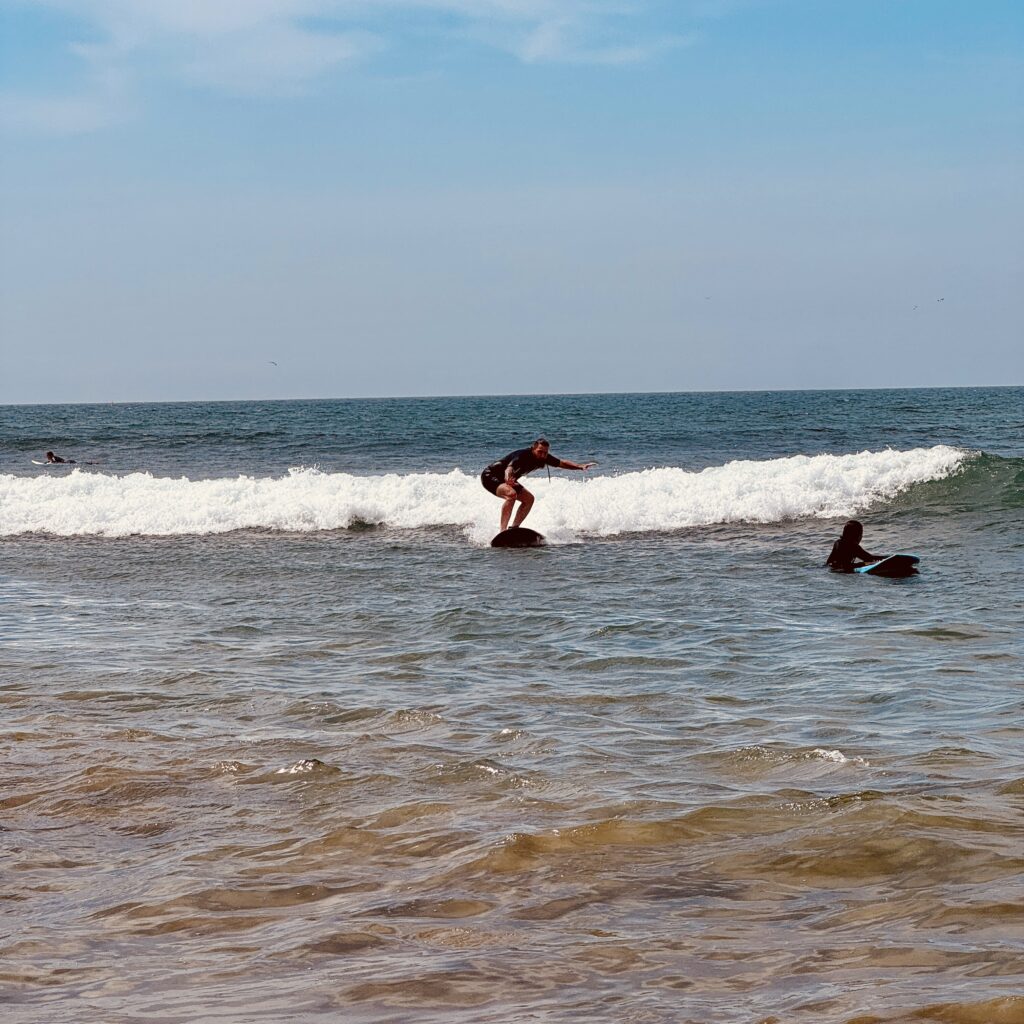
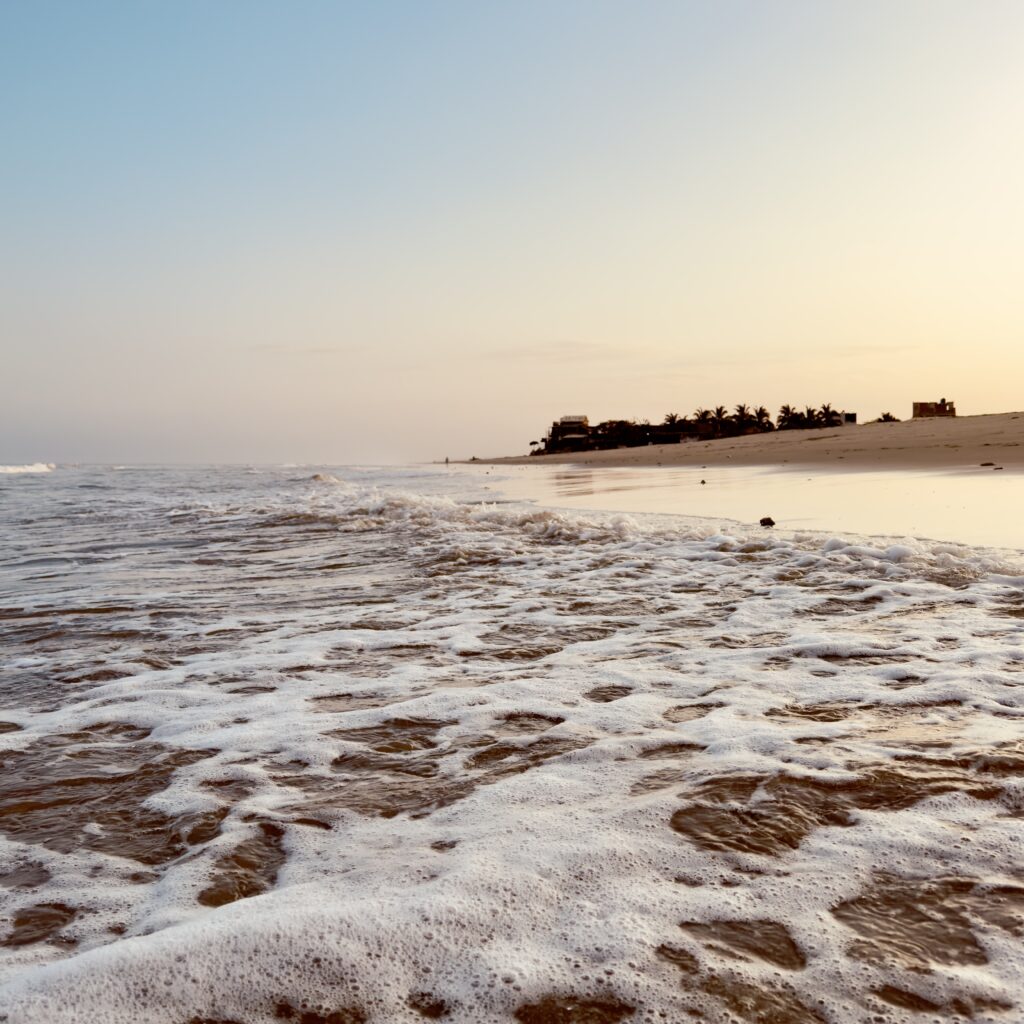
Money, Safety, and Practical Family Tips
Máncora felt safe throughout our stay, busy enough to feel alive, small enough to stay relaxed. That said, like anywhere new, it pays to use common sense.
Money Matters
So boring I know…But we realised finding and using cash machines that were safe and did not charge a silly fee was important, so the main banks we used were Caja Piura and Banco de la Nación, both reliable and fee-free for international cards.
Most cafés and restaurants take card payments, but smaller stalls and mototaxis are cash-only, so it’s worth keeping 20–50 soles on hand.
If you’re staying long-term or crossing borders frequently, tools like Wise make currency conversions easy and cheaper than bank exchanges.
Safety Notes
Máncora’s main strip is lively but can feel chaotic at night, keep valuables close and avoid walking the beach after dark.
During the day, it’s family-friendly and easy to navigate. Locals were welcoming and happy to help when we asked directions or needed advice.
Family Logistics
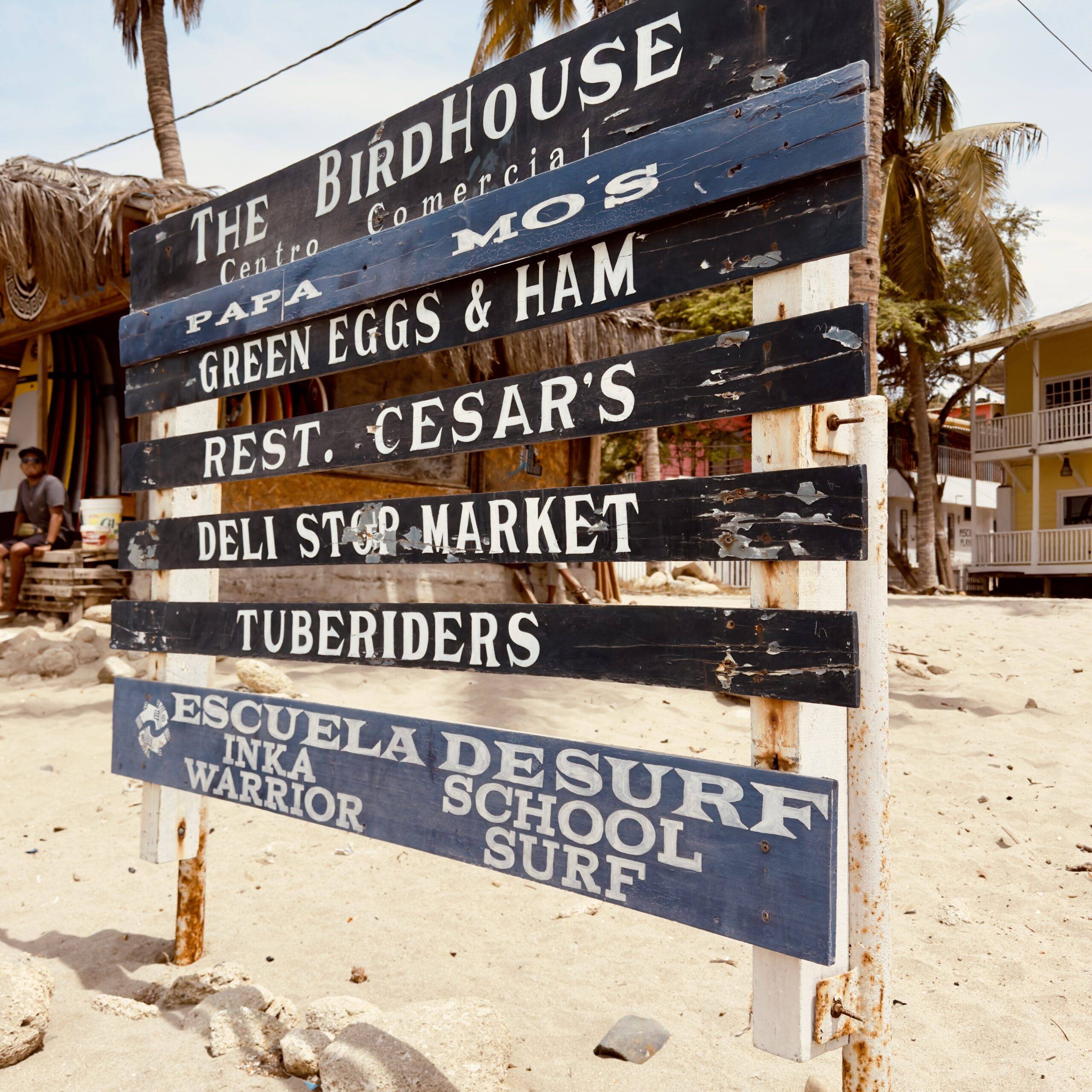
Beachfront properties without kitchens look tempting, but you’ll spend more. A small apartment or guesthouse with cooking space will stretch your budget and your patience much further.
If you’re arriving early morning, pre-book your stay, there aren’t many safe 24-hour cafés open before sunrise.
Why Máncora Was Worth It
Looking back, Máncora wasn’t the most dramatic or adventurous stop on our route, and maybe that’s why it mattered so much. After weeks of movement, logistics, and altitude, it forced us to slow down.
The town’s dusty edges, long beaches, and sleepy rhythm gave us space to breathe again, space we didn’t realise we’d lost somewhere between border crossings and bus stations. The kids found a rhythm of their own, too: chasing waves, collecting shells, and greeting the same beach dogs every morning like old friends.
It reminded us that family travel doesn’t have to mean constant motion. Sometimes, the most valuable days are the ones that look uneventful from the outside, the quiet breakfasts, the salt-sticky afternoons, the laughter that comes from nowhere in particular.
Máncora gave us that pause, and it’s one we’ll carry with us as we keep heading south.
If you’re planning your own route through northern Peru, consider giving yourself permission to slow down here, too. You might just find it’s the reset you didn’t know you needed.
If Máncora’s on your list (or even if it wasn’t until now), we’ve put together a simple Family Guide Map to Máncora, complete with our favourite cafés, kid-friendly beaches, and the exact Airbnb area we’d stay in again.

